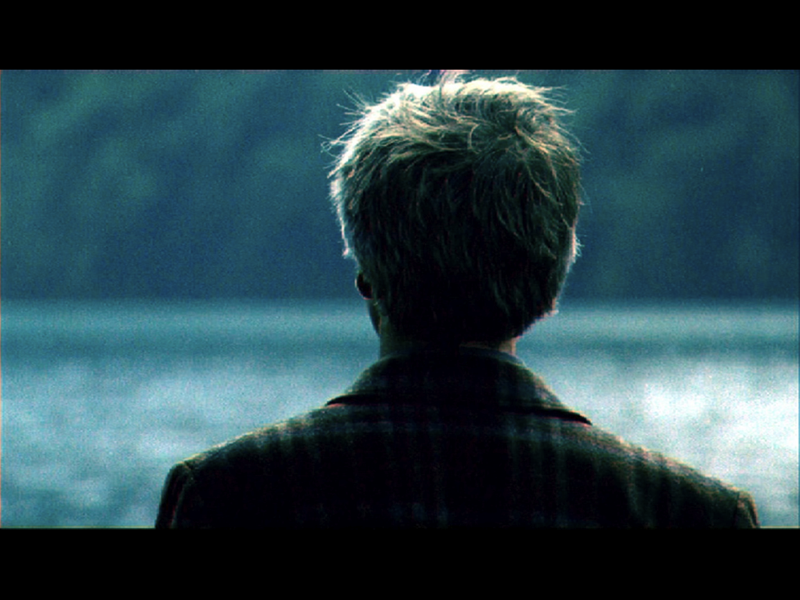
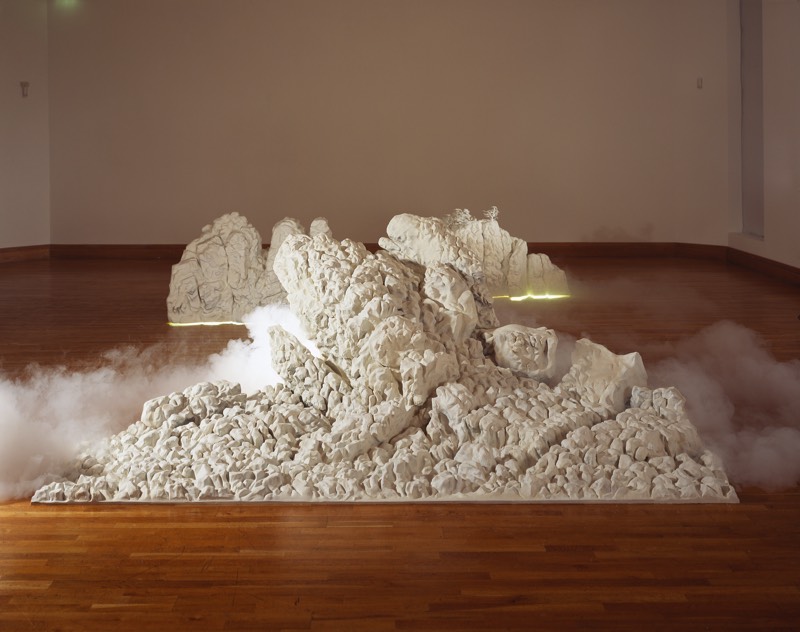
Until Now, a solo show at the RHA Gallery in Dublin, consists of a large sculptural and film installation, which addressed the nature of the sublime in art through Romanticism, the first autonomous art, democratic in its outlook, that one did not need a classical education to appreciate. Proust suggested that the point of contemporary aesthetics may not be to analyse works of art, proposing that one should revalue other dimensions of subjective experiences like that of nature. But what he seemed to overlook is that before they entered a common vocabulary of experience most aesthetic feelings were given artistic formulation. The sense of natural beauty was introduced into Europe by landscape painters along with the sense of the sublime.
On entering the gallery one encounters ‘Unpainted Mountain’, a sculptural reconstruction of the mountain in the painting ‘The Wanderer above the sea of fog’ by Caspar David Friedrich. Three fibreglass structure form a reconstruction of the foreground and mid-ground of the painting and have the appearance of floating approximately 1.5 cm from the ground. Indicative of the manner in which Friedrich constructed his paintings, unlike his predecessor Claude Lorraine who used a valley or a river as the line of sight, Friedrich uses pictorial devices such as flanking and overlapping rocks, mountains, trees to arrive at the horizon, giving only discontinuous moments of passages to the horizon, a site of contemplation for the Romantics.
On entering the gallery one encounters ‘Unpainted Mountain’, a sculptural reconstruction of the mountain in the painting ‘The Wanderer above the sea of fog’ by Caspar David Friedrich. Three fibreglass structure form a reconstruction of the foreground and mid-ground of the painting and have the appearance of floating approximately 1.5 cm from the ground. Indicative of the manner in which Friedrich constructed his paintings, unlike his predecessor Claude Lorraine who used a valley or a river as the line of sight, Friedrich uses pictorial devices such as flanking and overlapping rocks, mountains, trees to arrive at the horizon, giving only discontinuous moments of passages to the horizon, a site of contemplation for the Romantics.
“A more recent work, ‘Unpainted Mountain’, is simultaneously immersed in and cut off from the world beyond art. Two fibreglass mountains float on clouds of light. The white halogen light has no edge because dry ice blends the light with that of the room, turning this installation into a vignette that merges the spaces of art and spectator. They are painted white to look like they are not painted. Not-painted, here, is a signifier, not a natural state. The mountains are not in their original fibreglass state; they are contrived to appear untouched. They are not raw, then; they are ghostly, blanched, colourless. Face-to-face with these mountains, we are not the spectators of a scene, a picturesque beauty spot. The landscape is not framed, cut off, in space; it is cut off from the world it occupies by being flayed of its skin, plucked from the appearance of its appearance. White objects in galleries are mirrors of the gallery itself. White paintings identify themselves with the white walls on which they hang and white sculptures mimic the white plinths on which art objects are elevated to meet the visitor’s gaze framed by white walls. ‘Unpainted Mountain’ separates itself from the world by adapting itself, ghoulishly, to the gallery, disappearing in its white on white purity like a phantom, a vision, a feeling. Here the binary of the separation of art from life and the merging of art and life is caught in a tense tidal flow, pulling away and rushing back in, neither decidedly autonomous nor finally immersed in everyday life. Here is a landscape that is quite unnatural. The trees are white and the rocks are white. As such, they merge together and hide one another. ‘Unpainted Mountain’ is an oxymoronic object: a monochrome landscape. “ David Beech
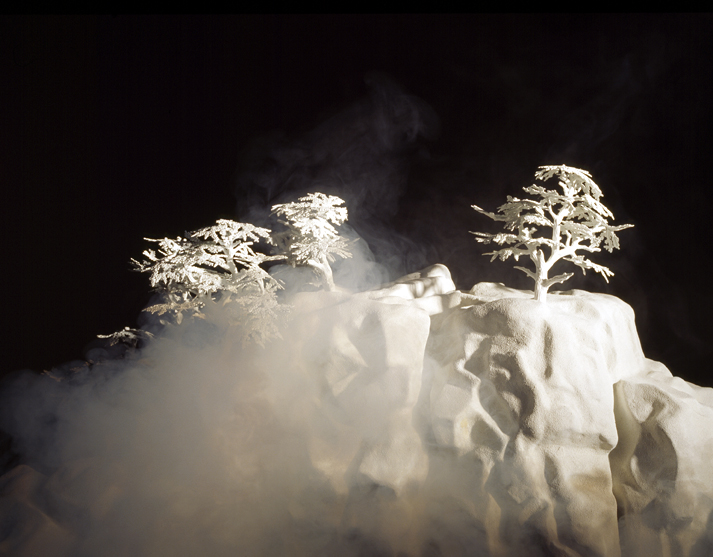
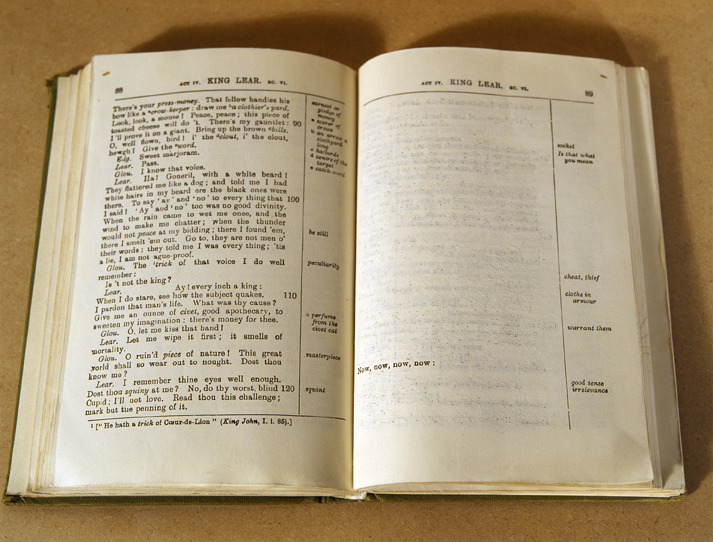
On the floor, a replica of The Dreamachine lies on the floor. Designed by Brion Gyson and the mathematician Ian Sommerville in 1959, The Dreamachine is a simple stroboscopic column meant to be viewed with your eyes closed and induce a hypnotic, hallucinogenic effect. “It was, in short, a machine meant to help you get over to the other side of reality... Walker and Walker, by re-creating it as a static object it lies on the floor horizontal, are dealing with a symbol of the Beat experience as opposed to the experience itself. When one thinks about it, of course, that’s what Friedrich was doing, assembling a catalog of landscape tropes for the Romantic state of being.” William L. Fox
Placed in a vitrine fixed to a wall nearby is a work titled ‘Now’ a partially erased book Shakespeare’s King Lear. "In the Walker’s Now, a book of Shakespeare lies open to King Lear, Act IV, Scene VI in which the blind Gloucester, Lear’s double, has been tricked into thinking that he stands perilously perched at the edge of a precipitous cliff. He thrusts himself forward and swoons. Upon awakening he is convinced that he has experienced a miracle. There is perhaps no better illustration of the sublime as aesthetic category than this near leap into the abyss. What is left to be read on the Walkers’ effaced page in the open book are the words “now now now now.” Claire Dagle
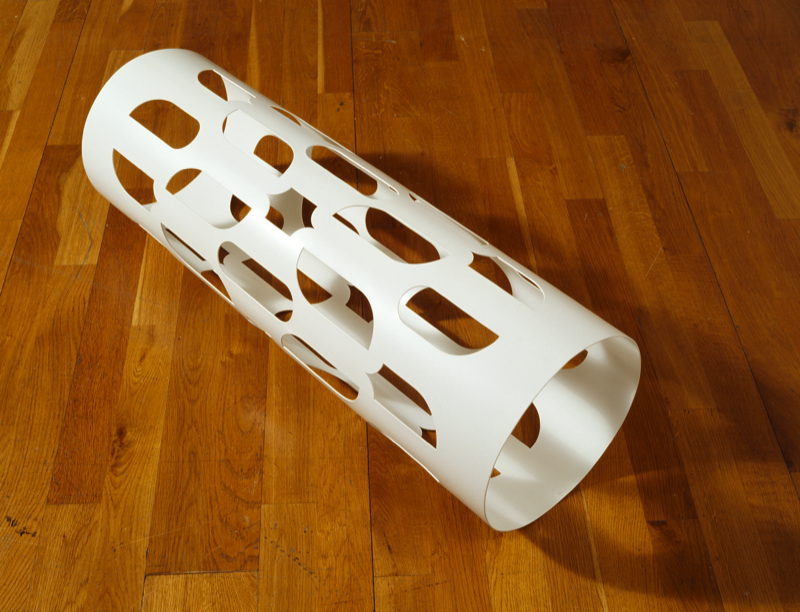
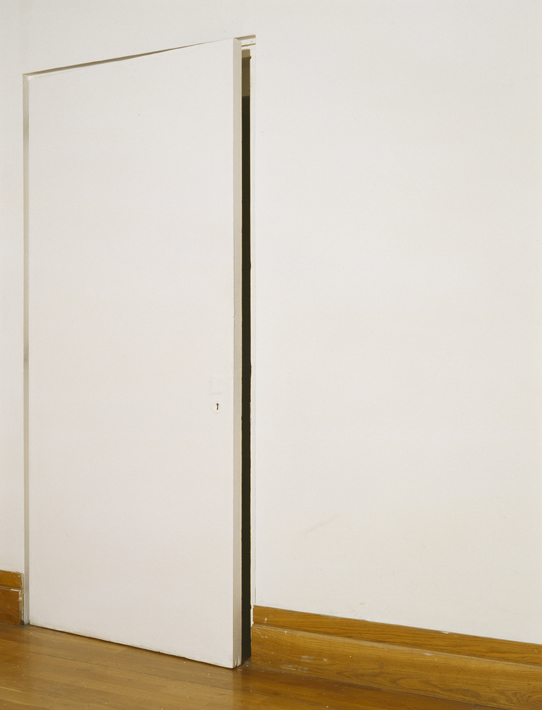
Entering a second room, a side door is left slightly ajar from which emits a strange white noise, an audio work titled 'Echo'. “Walker and Walker take up this Romantic idiom of the origin in their sound work ‘Big Bang’, which is a simulation, in collaboration with Professor John G. Cramer, of the sound of the remaining echo of the Big Bang. It is the ur-sound, the sound of the ur-event, the origin without ground, the unprecedented precedent of everything. And yet, what we hear is an echo, a trace, a ripple – the origin is absent. This sound, an emissary of the origin of everything, is not the origin itself. Installed within a dark room with the door slightly ajar, ‘Big Bang’ presents the slenderest glimpse of absolutely everything. It is an appropriated sound, a found object that iterates the origin, and in a sound that we have never heard before. Originality, including the ur-precedent of the pluriverse, appears, after prolonged delay, in another form. Originality doesn’t cheat us when it takes other forms; this is the only way that originality can appear.” David Beech
In the adjacent gallery the film 16 mm film Nightfall is screened.
“Set at the Königssee, the deepest and purest lake in Germany, and shot at twilight, the film tracks a solitary figure as he walks down through a forest, then pauses to examine two stones at the shore of the lake. He puts one in his pocket, drops the other, steps lightly into a boat, and begins to row across the water. This is a classic doubling device, your destination at your back as you row, thus watching where you’ve come from. To his surprise, he spies an identical figure walking down to the shore, and picking up the remaining stone. The rower, continuing his previously overdubbed musings on the falling of darkness, says in his first outloud words: “Beyond which lies darkness.” His doppelgänger replies: “Beyond darkness, the other side of silence,” then drops the stone, sending ripples across the lake.
The rower is startled to find that his double ashore has disappeared, whereupon he continues his traverse of the lake, pondering this space where the day is no more, yet darkness has not yet arrived, a space inhabited only by individuals wrapped in their thoughts, a space “in which whatever falls continues falling . . . falling.” The last word is taken up as an impossibly loud echo among the limestone cliffs, and as the echoes quickly fade, so does the film.” William Fox
